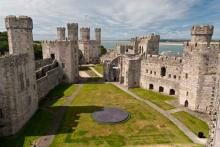Historic buildings definition
Approved document E: Resistance to the passage of sound, defines ‘historic buildings’ as:
- Listed buildings.
- Buildings situated in conservation areas.
- Buildings which are of architectural and historical interest and which are referred to as a material consideration in a local authority’s development plan.
- Buildings of architectural and historical interest within national parks, areas of outstanding natural beauty, and world heritage sites.
- Vernacular buildings of traditional form and construction.
An historic building is generally considered to be a building or structure that has some kind of 'historic value', i.e. people in the present are connected to it via past events in some way. This value warrants it being afforded consideration in planning decisions that have to be made concerning it.
A building may hold special historic interest because of its importance with respect to a particular historical event or period, or be associated with nationally important people. Alternatively, there might be special historic interest in the building itself, i.e. its construction methods, design, architectural significance, and so on.
Energy Efficiency and Historic Buildings, Application of Part L of the Building Regulations to Historic and Traditionally Constructed Buildings, published by Historic England in 2017, suggests that:
‘For the purposes of the interpretation of the energy efficiency requirements of the Building Regulations, Approved Documents L1B and L2B, and this series of documents, ‘historic buildings’ are defined as those which meet at least one of the following criteria:
- Listed in accordance with section 1 of the Planning (Listed Buildings and Conservation Areas) Act 1990 at Grades I, II* or II.
- In a conservation area designated in accordance with section 69 of that Act.
- Included in the schedule of monuments maintained under section 1 of the Ancient Monuments and Archaeological Areas Act 1979.
- Buildings which are of architectural and historical interest and which are referred to as a material consideration in a local authority’s development plan or local development framework.
- Buildings which are of architectural and historical interest within national parks, areas of outstanding natural beauty, registered historic parks and gardens, registered battlefields, the curtilages of scheduled ancient monuments, and world heritage sites.’
[edit] Related articles on Designing Buildings Wiki
IHBC NewsBlog
Purcell’s guidance on RAAC for Listed Buildings in England & Wales
The guidance specifically focuses on Reinforced Autoclaved Aerated Concrete (RAAC) in listed buildings.
IHBC Membership Journal Context - Latest Issue on 'Hadrian's Wall' Published
The issue includes takes on the wall 'end-to-end' including 'the man who saved it'.
Heritage Building Retrofit Toolkit developed by City of London and Purcell
The toolkit is designed to provide clear and actionable guidance for owners, occupiers and caretakers of historic and listed buildings.
70 countries sign Declaration de Chaillot at Buildings & Climate Global Forum
The declaration is a foundational document enabling progress towards a ‘rapid, fair, and effective transition of the buildings sector’
Bookings open for IHBC Annual School 12-15 June 2024
Theme: Place and Building Care - Finance, Policy and People in Conservation Practice
Rare Sliding Canal Bridge in the UK gets a Major Update
A moveable rail bridge over the Stainforth and Keadby Canal in the Midlands in England has been completely overhauled.
'Restoration and Renewal: Developing the strategic case' Published
The House of Commons Library has published the research briefing, outlining the different options for the Palace of Westminster.
Brum’s Broad Street skyscraper plans approved with unusual rule for residents
A report by a council officer says that the development would provide for a mix of accommodation in a ‘high quality, secure environment...
English Housing Survey 2022 to 2023
Initial findings from the English Housing Survey 2022 to 2023 have been published.
Audit Wales research report: Sustainable development?
A new report from Audit Wales examines how Welsh Councils are supporting repurposing and regeneration of vacant properties and brownfield sites.
















